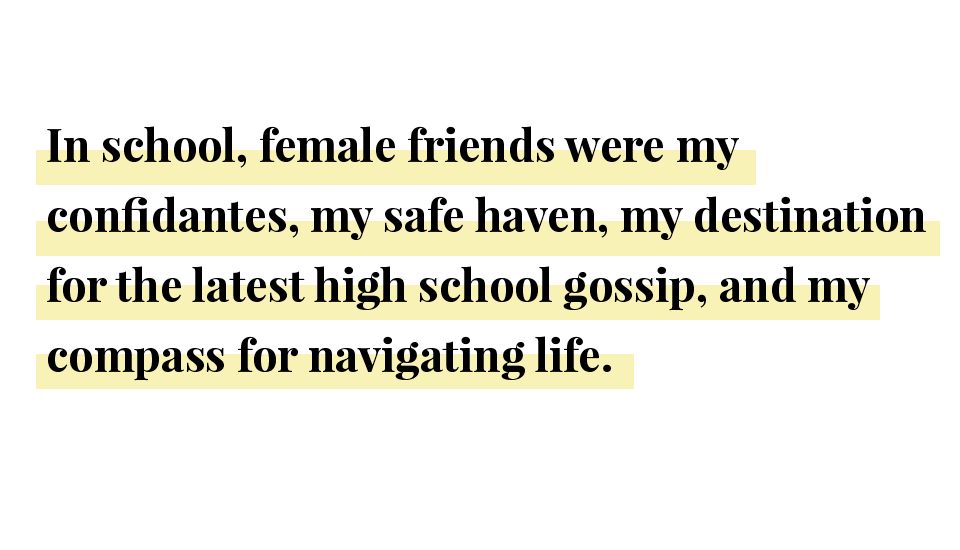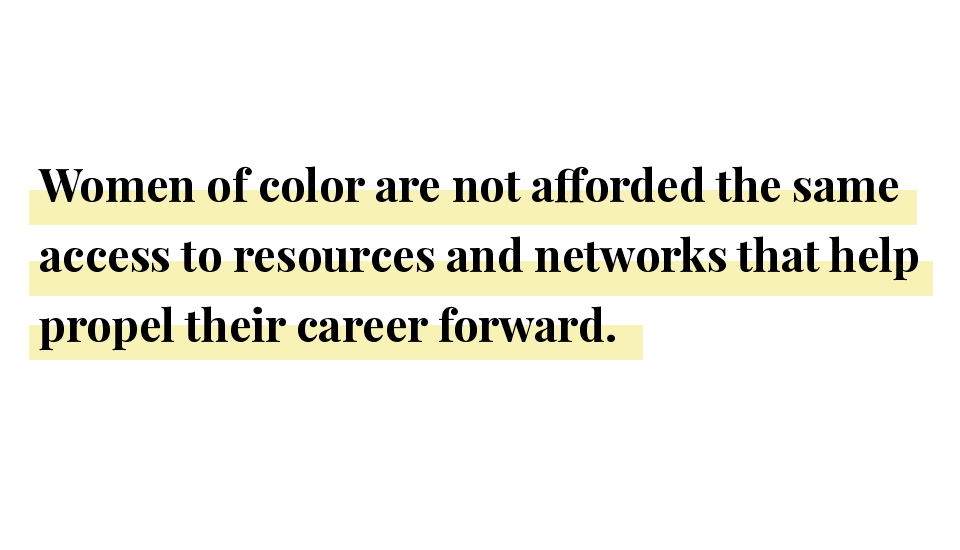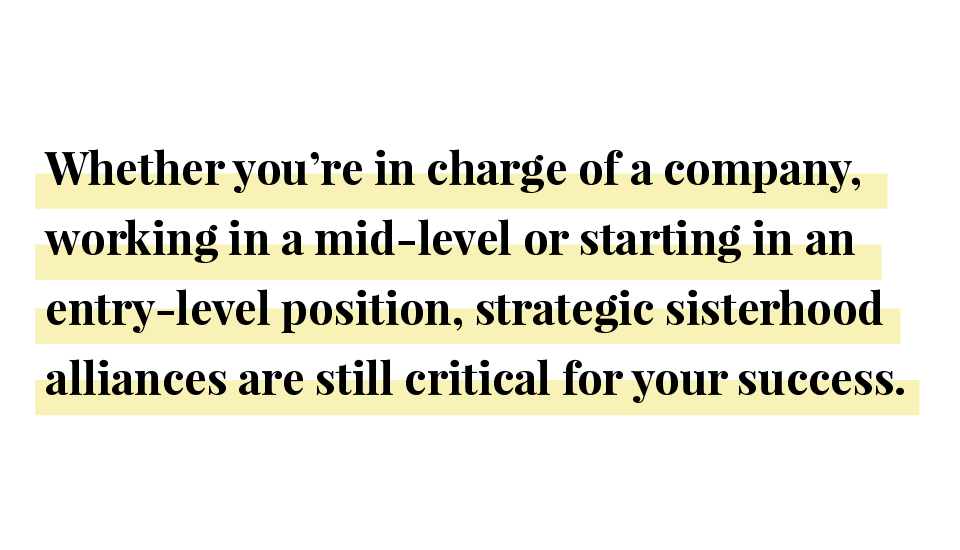A few months ago, I attended a luncheon for professional women—the purpose of this luncheon was to unite and build community with likeminded upwardly mobile women.
We bonded over stories of triumph and shared candid
stories of sexism and
discrimination in the workplace. Our keynote speaker was a notable political figure who had overcome enormous personal and professional challenges—she spoke with conviction and resolve. In the middle of her speech, she asked a thought-provoking question that immediately stunned the audience but called for deep reflection. She wanted to know, how many of us had experienced hate and animosity from other women in our professional lives?
Seeking Sisterhood
Growing up without a biological sister, I sought out sisterhood from friends in school. In school, female friends were my confidantes, my safe haven, my destination for the latest high school gossip, and my compass for navigating life. They encouraged me. They fought for and with me whenever my reputation was challenged. They played the role of a wing woman whenever I expressed interest in a guy I liked.
Some of the friends I met in college are still my close friends today—athough our relationships have changed and look different. These days, we must navigate the priorities of
booming professional careers, relationships, marriage, and
motherhood. While we may not see each other often, sisterhood and love are still at the core of our friendship.
Contrarily, I still experienced much disappointment from female strangers, acquaintances, and friends. Navigating professional spaces with women can often be a huge paradox—while women can be our biggest supporters and encouragers, they can also be our worst enemies.
We often fail to recognize that while women cannot possess the power to be
sexist in an institutional sense, we are still forced to live in a society where sexism is an integral pillar of many of our workplaces. Sexism from women doesn’t often resemble the overt discrimination that impacts your positional power or salary potential in an organization. Instead, it's covert discrimination—the behind-the-scenes catty gossip, the deliberate exclusion from meetings or events, and increased hostility and jealousy.
This internalized sexism has
far-reaching consequences. Women discriminating against other women damages relationships between men and women in the workplace, too. Suspicious competitive behavior towards other females validates the stereotype some men hold and makes them even more likely be discriminatory.
The Necessity for Alliances
Women of color do not enjoy the same privileges as white women, as they must battle workplace sexism and racism simultaneously. In my first professional job, I found myself being the only woman of color. I craved the support and encouragement of another colleague, with whom I could cultivate a mutually beneficial relationship—one built on empathy, trust, and a shared racial identity.
Building and cultivating sisterhood for women of color takes on a whole different connotation. Women of color are not afforded the same access to resources and networks that help propel their career forward.
While organizations are not able to legally ban the participation of
women of color professionals in these spaces, these networks do engage in pervasive and frequent forms of covert discrimination. This discrimination ensures that the benefits of these networks are relegated to an extremely homogenous group. When women of color are not in a position to change or eradicate these inequities, they must, in turn, search and execute other strategies in order to both survive and thrive.
One of these strategies is using sisterhood alliances.
Build Strategic Sisterhood Alliances
Here are a few tips and strategies on how to build and sustain alliances with women of color in the workplace. Whether you’re in charge of a company, working in a mid-level or starting in an entry-level position, strategic sisterhood alliances are still critical for your success.
Be Each Other’s Anchor
An anchor is described as an object that that holds something in place. In a symbolic sense, having a sister as an anchor is someone that keeps you both grounded and focused—even in the face of discouragement and defeat.
When women of color experience racism in the workplace, they need to retreat to a safe space where the constant threat of both racism and sexism is lessened—and where there is a common and a shared racial experience.
I remember going to work after the untimely and unfortunate death of a young African American teen, Trayvon Martin. I was emotionally and mentally encapsulated by the incident and I needed an avenue to express feelings. Having another black woman in the work environment allowed me the opportunity to share and feel emotions like rage—authentically, without question or challenge. When two people are able to anchor each other, it is powerful, liberating, and transformative.
Back Her Up
A month ago, I attended a women’s leadership conference. One of the keynote speakers said that the best thing women can do for each other is back each other up. I instantly thought back to being in grade school—defending my friends against rumors and engaging verbally with other kids who picked on my friends.
In the workplace, many women of color often are the token—they often have to deal with being the lone voice in the room with very little support from the organization. I made a vow that anytime a women spoke up in the work environment, especially in situations where she was challenging an idea or opposed a standard practice, I would repeat what she said. I would acknowledge to everyone in the room that I agreed with her.
This is a powerful tactic in more male-dominated professions, and it is incredibly empowering for those who are the lone voice.
Help Build and Strengthen Each Other’s Social Capital
Social capital can be described as a network of relationships that have productive benefits. People use their social capital to gain an advantage in society. My motto is that you never know who is going to give you your next best opportunity, so it's critical that you cultivate a solid and reputable network. Regular connection and communication with your network can be an important step towards professional success.
With every woman of color I meet and form a relationship with, I make the effort to introduce her to at least four new people. There is often a tendency to want to keep your network a secret as a way to hoard the benefits or to shun competition.
This is especially critical for women of color. A lot of their social capital building occurs outside of their work environments or even outside of traditional professional spaces. It’s amazing what community can be cultivated when we refer women to our hairdressers, our pastors, our friends, and the people in our community. We must use our non-traditional spaces—to be connectors and opportunity-builders for each other. When one woman wins, we all win!
I, of course, acknowledge that there is much work to be done in terms of improving diversity and inclusivity for women of color.
Right now, we are faced with the decision to wait for our workplaces to change or to change them ourselves.














